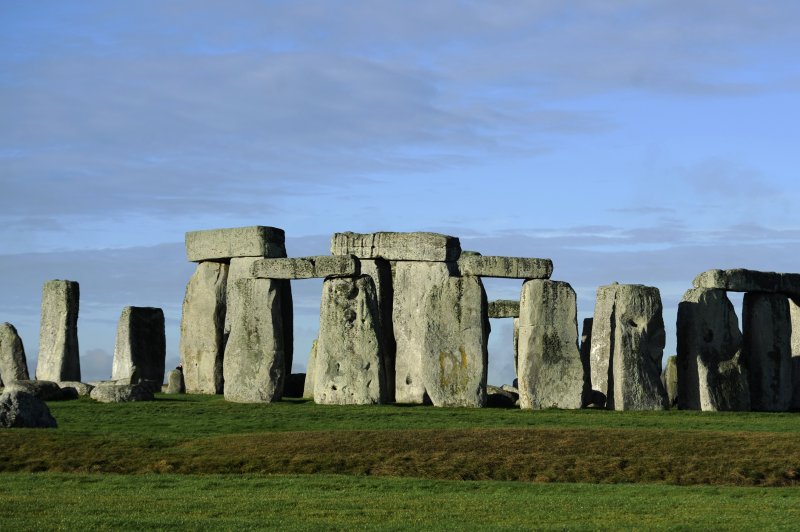A view at Stonehenge, the 5,000 year old stone circle, near Amesbury, Britain, in 2013. Researchers now think the stones may have been moved into place on sledges greased with pig lard. File Photo by Facundo Arrizabalaga/EPA-EFE
July 16 (UPI) -- For decades, historians, archaeologists and all sorts of scientists have tried to figure out how the ancient British mined, transported and arranged the massive stones that came to be known as Stonehenge.
New research suggests lard may have played a surprisingly important role in the monument-building enterprise.
Over the years, researchers have solved several of Stonehenge's mysteries. Geologists have helped locate the quarries from which the giant stones were sourced. Geneticists have even determined where the builders of Stonehenge and their ancestors migrated from.
And archaeologists have sussed out some of the methods used to move the stones. For example, archaeological research and modern experiments suggest the stones may have been loaded onto sleds and slid along tracks made of logs.
Now, scientists have found evidence that the people who built Stonehenge greased those log roads with lots and lots of pig fat. The lard, researchers surmised, was used to reduce friction, and thus, reduce the amount of work early Brits had to do.
The new theory is based on analysis of large ceramic fragments discovered at Durrington Walls, near Stonehenge. Chemical analysis of the shards revealed the presence of pig fat. The remains of whole pigs were found near the fragments.
If the pigs were intended to feed Stonehenge laborers, researchers suggest the bones would have been chopped up. Instead, archaeologists recovered whole carcasses.
Researchers also claim the ceramic fragments are too big to be the remains of vessels used for eating. Instead, archaeologists claim they are the remains of large buckets -- buckets used to catch the lard dripping from spit-roasted whole hogs.
"I was interested in the exceptional level of preservation and high quantities of lipids -- or fatty residues -- we recovered from the pottery. I wanted to know more about why we see these high quantities of pig fat in pottery, when the animal bones that have been excavated at the site show that many of the pigs were 'spit roasted' rather than chopped up as you would expect if they were being cooked in the pots," Lisa-Marie Shillito, a senior lecturer in landscape archaeology at Newcastle University, said in a news release.
Though researchers acknowledge that questions about the use of pigs and pig fat at the archeological site remain, their findings -- published this week in the journal Antiquity -- suggest researchers must carefully consider how they interpret findings related to food residues on ceramics.
"There are still many unanswered questions surrounding the construction of Stonehenge," Shillito said. "Until now, there has been a general assumption that the traces of animal fat absorbed by these pieces of pottery were related to the cooking and consumption of food, and this steered initial interpretations in that direction. But there may have been other things going on as well, and these residues could be tantalizing evidence of the greased sled theory."
"Archaeological interpretations of pottery residues can sometimes only give us part of the picture," she said. "We need to think about the wider context of what else we know and take a 'multi-proxy' approach to identify other possibilities if we hope to get a better understanding."















